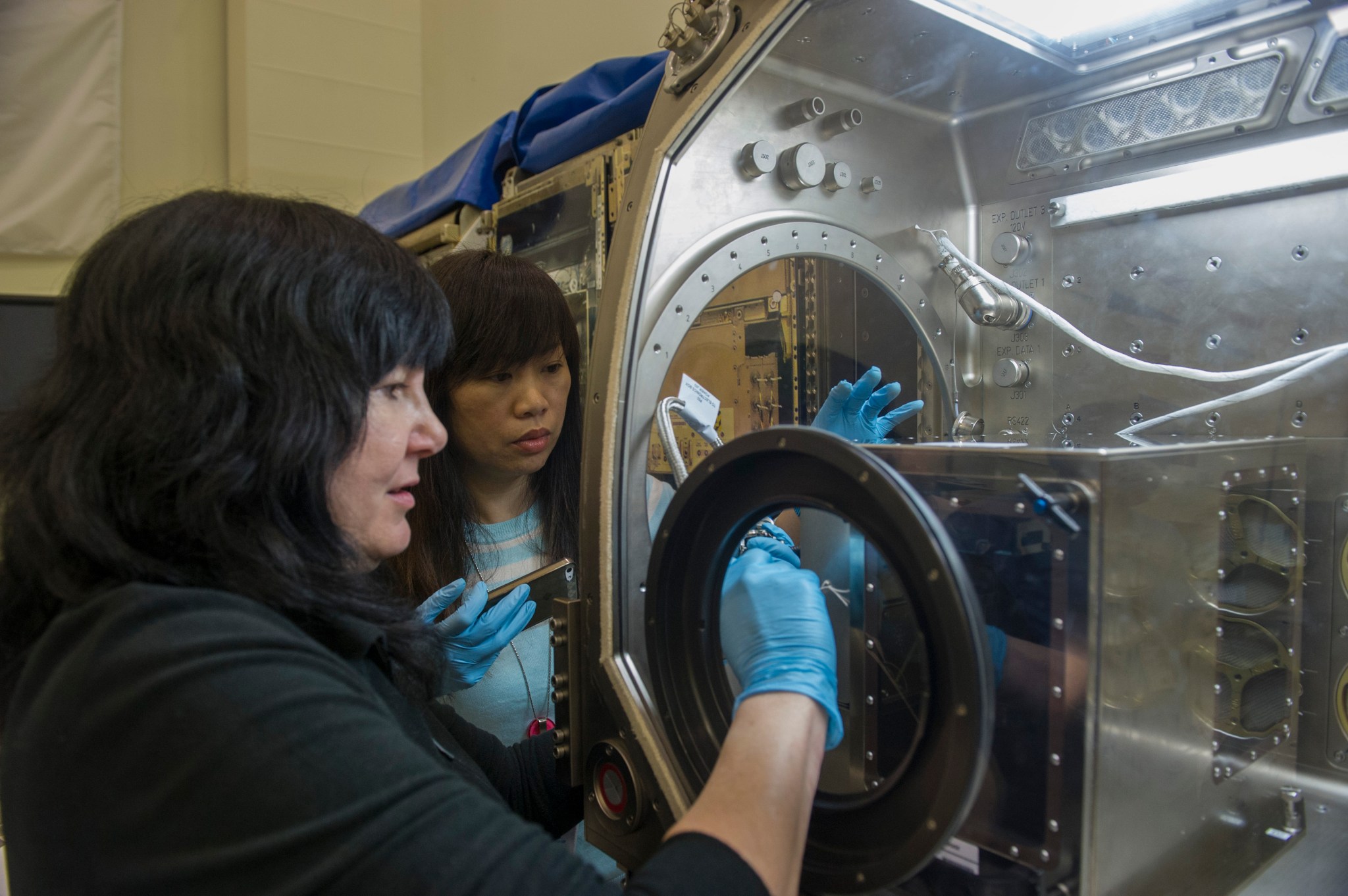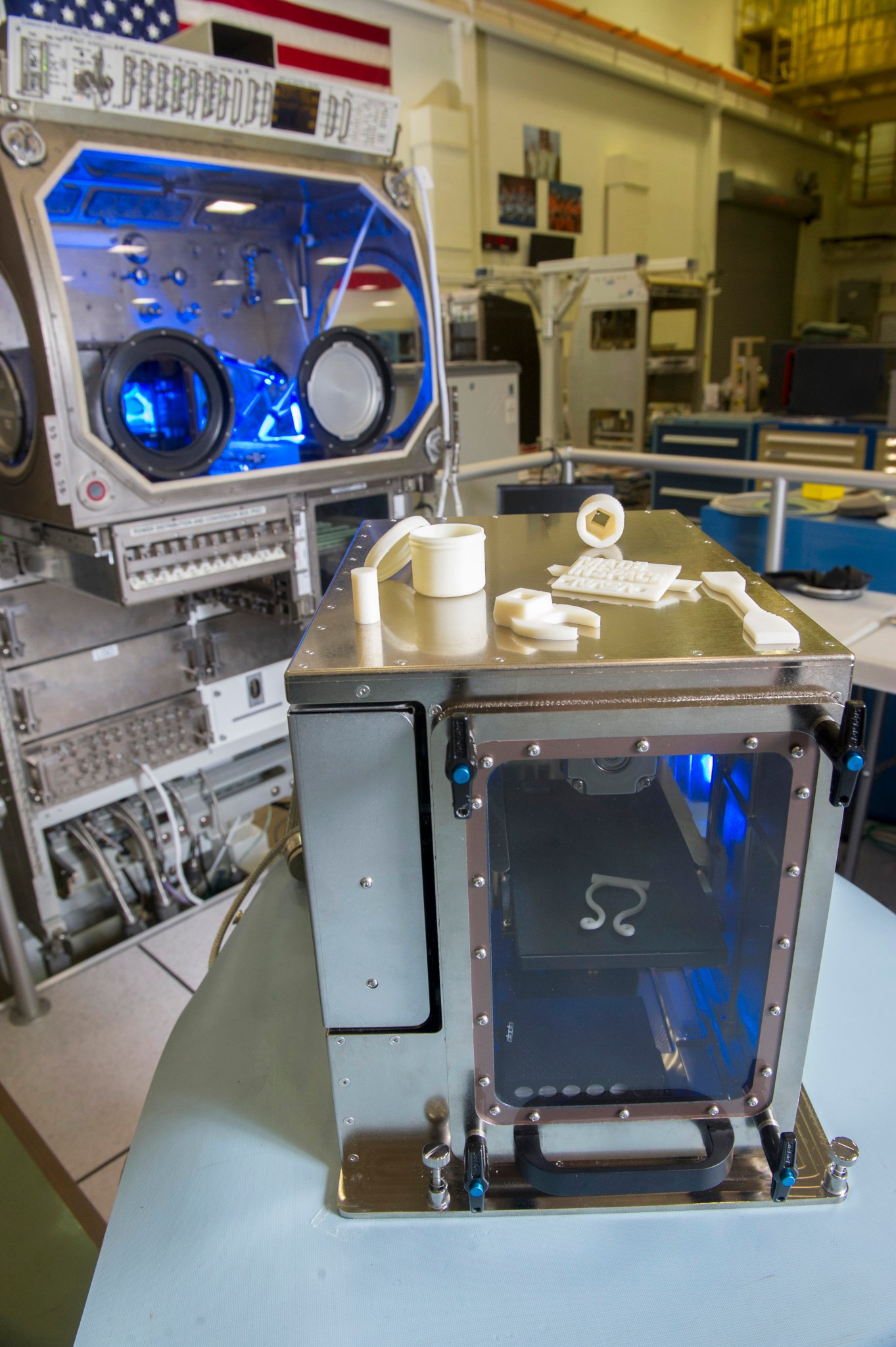A 3-D printer that astronauts call their version of a “Star Trek” replicator has just completed a series of tests at NASA’s Marshall Space Flight Center in Huntsville, Alabama, verifying it is ready to be launched to the International Space Station later this year.
In-space additive manufacturing, or 3-D printing, has the potential to revolutionize every aspect of space exploration from printing small critical parts and tools to eventually building larger structures in space.
The 3-D printer, built by Made In Space in Mountain View, California, was subjected to a battery of tests by NASA Marshall engineers, who verified the hardware meets NASA safety and operational requirements for use aboard the space station.
“The Marshall Center has extensive expertise in additive manufacturing technology and in preparing experiments for launch and operating them on the space station,” said Chris Singer, director of Marshall’s Engineering Directorate. “Our expertise along with our ability to test payloads in flight-like environments has provided an excellent opportunity for a government and industry partnership to verify that the Made in Space printer was ready to demonstrate this technology for the first time in space.”
The Made In Space team brought the printer to Marshall in March, and for three months, the printer experienced a shakedown cruise through multiple laboratories. Marshall engineers put the printer through its paces to ensure it could withstand vibrations during launch, verified materials and electronics were safe for station operations, tested it with station systems and ensured humans could operate the printer with ease. Astronauts even tried out the printer at NASA’s Johnson Space Center in Houston, becoming familiar with the hardware operations as part of astronaut training.
“Throughout our partnership with Made In Space, we have helped prepare the printer to work in an environment that is literally out of this world,” said Niki Werkheiser, 3-D print project manager at Marshall. “NASA engineers have a vast amount of experience designing and certifying hardware to operate in space. We were happy to share that knowledge with Made In Space. As a result, the hardware passed testing with flying colors.”
The first series of items to be 3-D printed on the ISS also were tested at Marshall and will serve as ground controls to be compared with articles on-orbit crew members will make aboard the space station.
The printer extrudes streams of heated plastic, which build layer upon layer out of acrylonitrile butadiene styrene plastic — the same material used to manufacture Lego® bricks — to create a three-dimensional object. Testing and operating the printer on the station is the first step toward creating a replicator which will be critical when explorers venture far away from Earth and need tools in remote locations.
“Made In Space has laid out a large, audacious vision for changing space exploration by bringing manufacturing to space,” said Jason Dunn, chief technology officer for Made In Space. “We’ve systematically pursued that vision by testing 3D printing in microgravity on parabolic or ‘vomit comet’ flights, designing a printer that will operate in low gravity conditions, and now flying our 3D printer to the ISS. Now that testing is complete, we are looking forward to seeing the first parts printed in space.”
Once the 3-D printer is installed in the space station’s Microgravity Science Glovebox, it will print an initial set of more than 20 demonstration parts, including a planned series of test coupons, parts and tools. These demo items were tested at Marshall inside an identical, ground-based engineering version of the glovebox.
The ground-based engineering team will see immediate imagery of parts printed on the space station via downlinked high-definition video, and will receive parts returned to Earth for detailed ground analyses. This first set of prints will verify the printer and extrusion process in microgravity. By comparing Earth-based and space-based printed objects, NASA will continue to refine 3-D printing technologies for the unique microgravity environment.
Testing of the 3-D printer in microgravity is part of the “3-D Printing in Zero-G Technology Demonstration” project, a joint venture made possible by a Small Business Innovation Research (SBIR) award between Made In Space and the Marshall Center. The highly competitive SBIR program encourages domestic small businesses to engage in federal research/research and development that has the potential and provides the incentive to profit from its commercialization. By including qualified small businesses in the nation’s research and development arena, high-tech innovation is stimulated and the United States gains entrepreneurial spirit as it meets specific research and development needs.
“This has been an ideal collaboration that truly illustrates how leveraging the mutual strengths of the government and small business can lead to remarkable capabilities that would not otherwise be possible,” Werkheiser said.
The printer also is a graduate of NASA’s Flight Opportunities Program, which enables new technologies before they are exposed to the harsh environments of space.
The 3-D printer effort is a shared investment between NASA’s Human Exploration and Operations Mission Directorate and Space Technology Mission Directorate, which together seek to innovate, develop, test and fly hardware for use in NASA’s current and future missions. The project illustrates the agency’s commitment to developing, testing and infusing new technologies into ongoing and future exploration efforts, enabling the path to asteroids, the outer planets, Mars and beyond.
For more information about the 3-D printer visit:




























